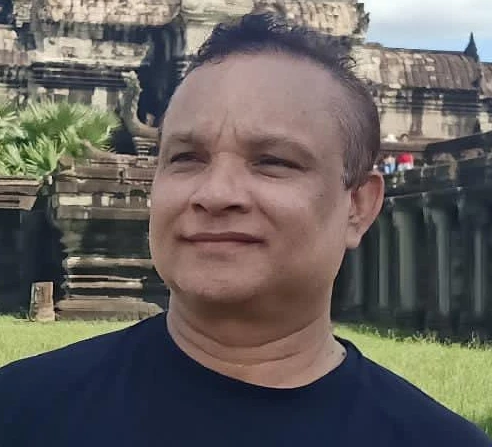 Health authorities in Phnom Penh conduct check-ups on health workers returning from the provinces after the Khmer New Year celebrations, amid concerns over the spread of COVID-19. © Chor Sokunthea / World Bank
Health authorities in Phnom Penh conduct check-ups on health workers returning from the provinces after the Khmer New Year celebrations, amid concerns over the spread of COVID-19. © Chor Sokunthea / World Bank
Cambodia was one of the first countries to report a COVID-19 (coronavirus) case after China, on January 27. By March 11when the World Health Organization declared COVID-19 a pandemic, Cambodia had confirmed five COVID-19 cases.
Yet according to Cambodia’s Ministry of Health (MOH), just 303 cases had been confirmed by November 17, and no deaths have been attributed to COVID-19.
What contributed to Cambodia’s successful response to COVID-19? A whole-of-government and whole-of-society approach, including strong epidemiological surveillance mechanisms to detect and respond, real-time databases and risk assessment mechanisms, rapid response teams, field epidemiology training, national public health laboratory capacity, and effective platforms for risk communication.
A swift lockdown
On March 16, almost six weeks after the first reported case, the government closed all educational institutions across the country, imposed travel restrictions, introduced a US$3,000 COVID-19 service charge for foreign arrivals and mandated health insurance for all in-coming travelers. Moreover, all travelers were required to self-quarantine for 14 days and undergo a second COVID-19 test on the 13th day.
A national action plan
With support from the World Health Organization, Center for Disease Control and other development partners, the Ministry of Health (MOH) updated Cambodia’s existing pandemic response strategy in March, releasing a new document entitled “National Action Plan: Preparing for and Responding to Novel Coronavirus (COVID-19) in the Kingdom of Cambodia” (”the Plan”).
The Plan defines four strategic approaches to coordinate government efforts with national and international partners: (1) reduce and delay transmission; (2) minimize serious disease and reduce associated deaths; (3) ensure ongoing essential health services particularly during epidemic peak periods; and (4) minimize social and economic impact through multisectoral partnerships.
Timely support from development partners
In addition to the government’s budget allocations to finance activities in the Plan, the government asked the World Bank Group to activate the Contingent Emergency Response Component (CERC) under the ongoing Health Equity and Quality Improvement Project, which is supported through a pooled fund contributed to by the Australian Department of Foreign Affairs and Trade, KfW Development Bank, and the Korea International Cooperation Agency. $14 million was able to be reallocated from other project components to the CERC .
With no time to waste, the World Bank worked closely with government counterparts to activate the CERC by March 27 (within two weeks).
The government also requested $20 million for a COVID-19 Emergency Response Project as part of the World Bank’s the Multi-phased Programmatic Approach to finance the remaining activities under the Plan. Given the lockdown, discussions took place virtually, and around the clock.
The hard work paid off: the World Bank Group’s Cambodia COVID-19 project was one of just two countries from the East Asia and Pacific Region included in the first batch of COVID-19 projects approved by the World Bank’s board on April 2. The Credit Agreement was signed and became effective four days later: one of the quickest agreements to become effective in World Bank history!
Complementary efforts
Building upon a solid partnership with the government and development partners, the World Bank’s COVID-19 project complements longer-term development work in the health sector.
The Bank’s investment is geared to help address critical gaps in implementing the Plan These include establishing and upgrading laboratories, isolation and treatment centers; providing essential medical supplies and communication; as well as ensuring continuity of essential services, such as case management, and infection prevention and control.
This collaborative approach made best use of the available human resources and time when the MOH might otherwise have been overwhelmed.
Progress to date
With the $14 million CERC reallocation, the government was able to procure critical emergency response supplies early in the crisis. These include 60 ambulances, 370 patient monitors, 110 ventilators, 37 mobile X-rays, three polymerase chain reaction machines for testing, and training for laboratory staff to safely test for COVID-19.
As of mid-September, $10.5 million or over 50% of the total $20 million additional project financing had been disbursed by the World Bank to partners including UNICEF, UNDP, UNOPS, and directly to contracted suppliers.
As a result of these combined efforts, Cambodia has been relatively unscathed by the pandemic. Support from institutions such as the World Bank Group is setting Cambodia on the path towards full recovery.



Join the Conversation